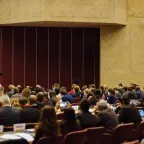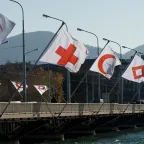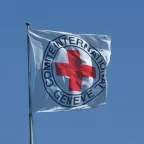From law to (regional) action: Regional reports on the implementation of international humanitarian law
… adoption of the Treaty on the Prohibition of Nuclear Weapons. The report also discusses the …
… adoption of the Treaty on the Prohibition of Nuclear Weapons. The report also discusses the …

… Parties to the Treaty on the Prohibition of Nuclear Weapons, New York, 5 March 2025. Your … Since 1945, the destructive power of nuclear weapons has increased many thousands …

… Parties to the Treaty on the Prohibition of Nuclear Weapons (TPNW), alongside representatives of … centre of all debates and decision-making on nuclear disarmament. Let me highlight why the …

… of the Red Cross New York, 3–7 March 2025 Nuclear disarmament as a long-standing … of the Treaty on the Non-Proliferation of Nuclear Weapons (NPT) and four years after the entry …

… ratified the Treaty on the Prohibition of Nuclear Weapons. The ICRC will continue to work … Arising from the Use of Explosive Weapons in Populated Areas. These instruments …

… humanitarian impact of weaponry, including nuclear arms, landmines, arms transfers, and …
… advance the goal of a world free of nuclear weapons; and address the potential risks posed … in warfare; and the existential danger that nuclear weapons pose to humanity as a whole: …

… and enduring humanitarian consequences of nuclear weapons use. Nihon Hidankyo has long advocated … the complete prohibition and elimination of nuclear weapons, an objective that aligns with …

… be limited as required by IHL (for example, nuclear weapons). The prohibition of indiscriminate attacks governs the use of all weapons, including those that are not …

… The 2024 Challenges Report focuses on: nuclear weapons – grey zones and hybrid warfare – …

Try one of the following resources:
Created in 1863, the ICRC library, alongside the ICRC archives, provides an indispensable documentary reference on the organization itself and international humanitarian law.
International humanitarian law is based on a number of treaties, in particular the Geneva Conventions of 1949 and their Additional Protocols, and a series of other instruments.
Customary international humanitarian law consists of rules that come from "a general practice accepted as law" and that exist independent of treaty law.